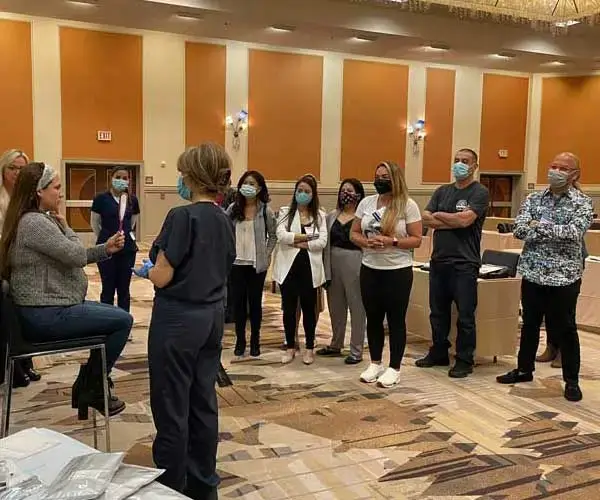Your Guide to Thread Lifting for Jowls
By Dr. Stephen Cosentino
PRESIDENT OF EMPIRE MEDICAL TRAINING
Youthful skin doesn’t last forever. One of the most noticeable signs of aging skin appears in the jawline, as heavy jowls sag around the jawbone and exaggerate age-related creases on either side of the chin.
According to Healthline, heavy jowls develop as facial skin becomes thinner and loses elasticity over time. Most people develop jowls as they age, but a lucky few — those with more subcutaneous fat or collagen in particular — manage not to.
On their own, dermal fillers — used to add volume and reduce wrinkles at various sites on the face — don’t eliminate or even reduce sagging jowls. Neither does Botox®, another common wrinkle-fighting cosmetic treatment.
A third option is more promising: the PDO thread lift. This minimally invasive alternative to a facelift offers instant and lasting (though still temporary) relief for heavy cheeks and jowls. Find out how it works and how to decide if it’s right for you.
Thread Lifting for Jowls: Who It’s Best For & How It Works
Not everyone is an ideal candidate for a jowl lift. The ideal candidate is relatively young (30s to early 50s) and has mild to moderate sagging in the jowls. Patients with deep lines or creases or profoundly sagging skin are better suited to surgical facelifts, as are older patients.
Assuming you’re a good candidate for this cosmetic procedure, here’s what to expect:
- First, your provider maps out the thread insertion points on your face.
- Your provider administers local anesthetic to numb the treatment area.
- The threads are inserted per the treatment plan, then lifted to tighten the skin. Jowl lifts generally use barbed threads to trigger the body’s healing response and stimulate production of collagen and elastin, which add volume and definition to the treated area.
- The excess thread is removed, leaving no visible threads above the surface of the skin.
How Long Does It Take?
The entire procedure takes 30 to 60 minutes. It should be completed by a board-certified plastic surgeon or someone working directly under them who has completed thread lift training.
What’s the Recovery Like?
Recovery time is short. Most patients return to work the following day, and prescription pain medication is not needed during recovery.
How Long Do Results Last?
The results of thread lifts for jowls last longer than Botox or filler. Most patients report improved appearance for 12 to 24 months afterward. Some providers combine jowl lifts with other minimally invasive cosmetic procedures such as ultrasound therapy, which further stimulates collagen production, and skin resurfacing, which temporarily restores a youthful glow to the skin.
Where Else Do Thread Lifts Work?
PDO threads are designed to lift sagging skin and promote collagen and elastin production throughout the body, though they’re not appropriate for use everywhere. Other common thread-lifting procedure sites include:
- The neck, typically to treat platysmal bands
- The upper cheek, as an alternative to dermal fillers
- The eyebrows and forehead
- The corners of the eye, a procedure known as a cat eye lift
- The abdomen, for lifting and tightening belly skin
- The upper arms, to reduce sagging underside skin
This isn’t an exhaustive list. If your cosmetic needs extend beyond your jawline, ask your provider where else PDO threads might be appropriate.


